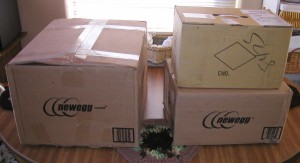As I write this, I recognize the truism that exists in the title of this post. Research, real research, takes time, effort, and energy that may be better expended elsewhere. It requires reading, often for extended periods, and is be exhausting. It requires thoughtful insight and introspection into a problem scope that will quickly expand beyond one’s intellectual horizon if unrestrained. It requires challenging mistaken preconceptions–sometimes going so far as to challenge deeply held convictions–and can lead to surprising or uncomfortable conclusions. At its worst, it comprises a seemingly endless path of drudgery; at its best, it can bring new insights.
But is there anything worse than countless hours of research posted freely without gratitude? There is! Derogatory remarks or misinformation posted as established fact whereby it becomes unmistakable that the author hadn’t a clue.
I recently came across a video posted on social media wherein the author spent considerable time whinging over the preliminary Ubuntu 20.10 release notes staking a fallacious claim on their apparent switch away from iptables to nftables. The narrator claimed this was somehow impossible, because it didn’t ship with nftables installed by default.
I won’t link to the video here; I see no purpose in further disseminating or rewarding objectively misinformed YouTubers. What I find incredibly frustrating about posts like his is that in less than 5 minutes’ research, it’s easy to find out what nftables actually is. Hint: It doesn’t replace all of netfilter; it, in fact, uses netfilter under the hood and simply replaces the packet classification framework previous used by iptables. nftables is an incremental improvement over existing tools. That’s it.
In this case, the reason the YouTuber was unable to find the installed tools is because the nftables package is strictly a userspace interface into the netfilter architecture that has shipped as part of Linux since kernel version 3.13. In other words, nftables literally comes in the box.
It’s curious to me that such an egregious mistake could be made when a single search reveals that, what the author thought was a mistaken addition to the preliminary Ubuntu 20.10 release notes (or outright lie?), is strictly a consequence of his understanding. He didn’t know anything about nftables, presuming instead that it cannot exist independently from the installed tools. Apparently, he didn’t know what the tools do either!
I’m aware videos take time to produce, and editing is almost certainly a lion’s share of the process, but failing any sort of due diligence by conducting research into the subject before turning on the microphone and running the screen capture software immediately gives me pause for thought. What other videos did this person post that are full of misinformation or objectively wrong?
Therein lies the rub. Failure to research even a broad understanding of the topic at hand can present a troubling conundrum for the informed reader- or viewership. Without depth of knowledge, what other dangers lurk beneath such troubled waters?
That’s not to say I don’t post things that are demonstrably false. I do precisely that quite often, either by posting conjecture–or my opinions–or by omission. Sometimes, at least on social media, I may be in a hurry to author a quick reply to someone that contains mistakes (and embarrassing typos, but we’ll pretend those didn’t happen). Often on this blog, I forget about posts dating back into my own antiquity that are no longer applicable, and neglect to place a warning that the information contained therein is dated or no longer valid. Essentially, it’s an indirect and unintentional form of dishonesty through omission. Yet readers are more willing to forgo levying judgment for these categories of mistakes if they understand the context (or age) of the post.
For something posted in the here and now, where there’s clearly no effort to conduct even the most basic form of research? That’s almost unforgivable.
Unfortunately, I expect this pattern to get worse, not better. We’ve seen YouTube videos expand to more than 10 minutes in length, because the algorithm rewards long-format content and because monetization options improve as run time increases. What would have taken less than three minutes to present now regularly exceeds 15! Poorly researched videos have greatly outnumbered well-researched competitors for years, and largely because YouTube rewards quantity over quality. Monetization and viewership depends heavily on vast quantities of material such that channels with more content tend to appear in user recommendations more often than those that work to the contrary.
High volume, poor information gets views.
This post isn’t intended to poke fun at anyone in particular (hence why I’m not linking to the guilty party). We’ve all been there. We’ve all been rushed and released things that don’t meet our minimum bar of quality, kicking it out the door and into the world before so much as a single edit. Thinking about it, this post isn’t so much intended itself to be a complaint as much as it is an effort to raise awareness and present a challenge to content creators: You can do better. Don’t post a video to complain about a topic–aim to educate your viewers. If you don’t like something, explain why and dig into the weeds. Raise the signal-to-noise ratio.
Disclosure: I’m not an Ubuntu user, so this post wasn’t authored as a consequence of defending their release notes. I don’t follow Canonical closely and have no idea what their plans are from one release to the next. I also don’t author YouTube videos as of this writing and am yet-another-content-consumer. I have my concerns, and I think we’re heading in the wrong direction.
We can do better.
(Some details have been glossed over to protect the innocent (?).)



